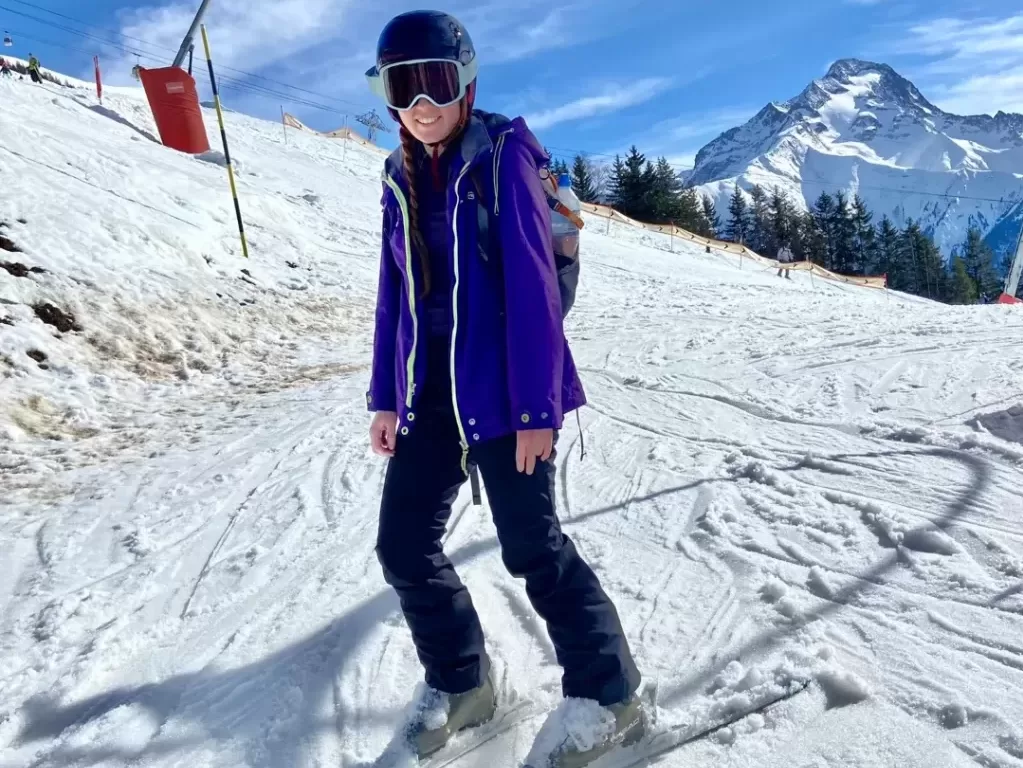How learning French is like learning to ski – Part 1
Most people who visit Grenoble do so because they ski. Grenoble, “Capitale des Alpes,” is the main mountain valley hub for French ski stations. This is why the second-most common follow-up question after someone asks where I live, is whether I ski. In fact, I don’t. Ah, but you will! is the reply, and despite some trepidation, I agree. This is simply what you do in Grenoble in winter.
 The most common follow-up question to where I live is whether I speak French. A month after arriving, the answer was un peu, or perhaps, J’apprends. Before I accepted my postdoc position (and immediately downloaded Duolingo), the answer was non. The language of academia is English, so my job doesn’t require me to speak French. But, I tell the asker, I want to learn. You’ll pick it up so fast! they insist.
The most common follow-up question to where I live is whether I speak French. A month after arriving, the answer was un peu, or perhaps, J’apprends. Before I accepted my postdoc position (and immediately downloaded Duolingo), the answer was non. The language of academia is English, so my job doesn’t require me to speak French. But, I tell the asker, I want to learn. You’ll pick it up so fast! they insist.
Before I arrived in Grenoble in the spring, I was told the ski season lasts until maybe April, but that the snow in the Alps has been terrible this year. I had seen the headlines about resorts having to manufacture nearly all of their snow. Surprisingly, however, within days of moving in, there was a snow dump forecast and my roommates were planning a weekend ski trip. I took them up on their invitation.
Learning French & translating a life
Back in the first month of Duolingo, it only took me a few weeks to realize that “Je suis américaine” and “Je mange un croissant au petit-déjeuner” were just scraping a few snowflakes off the tip of a language iceberg. What had I signed up for by deciding to move to France? Translating a life.
I started to realize how much I take my everyday language for granted: the ease of connecting with people, completing transactions, joining new clubs, and worshiping at church—in Cambridge, my previous home, I held poetry readings, for goodness’ sake. Sure, people in Grenoble, an international university town, may be slightly better at English than the recalcitrant French stereotype.
But I knew the complexities I had spent my life learning and cherishing in English were wayyyy down there in the French iceberg.
Learning to ski, pizzas, logic & bravery
Cut to a partly sunny day on the gentlest, somewhat slushy slope in Les Deux Alpes ski station. I snap my boots into the skis for the first time and my roommates begin to explain how to move successfully. They start with the pizza slice, of course; even I knew about that move. Heels wide, wider, knees even closer together.
There. I take my first little ‘pizza slice slide’ down the not-steep hill next to some tiny kids. Not bad.
Next: turning. You have to lean on the opposite ski from the direction you want to turn, they say. This does not compute. I have not yet gotten the hang of turning when another novice in our group, who seemed to get it on the first try, is ready to try a real beginner’s slope—une piste verte, a green slope. I don’t want to get left behind, so I follow them to the tow rope.
French is more humbling than expected
I’m generally good at imitating pronunciation, which I have always attributed to my musical training. French pronunciation has challenged that self-perception.
The oblong vowels and masquerading clusters of dropped consonants have taken a long time to settle. I still tentatively swap different versions of e and u, or I forget not to say the “ent” in plural verbs. I trip between guttural r’s and nasal vowels and the hard t slipped in with that feminine noun. This has been humbling in a way I’m more used to feeling while learning physical skills. I still have trouble accepting that the unfamiliar French sounds fighting with each other in my throat are more like learning dance steps—or figuring out which muscles make just the right lean to turn the skis.
Real challenges
After completely flopping when I first try the tow rope, I’m at the top of the green piste. This one is much steeper.
To get down with any semblance of control, I’ll have to do the skiing thing, which is to zig-zag, i.e., turn. I lean clumsily as I pick up speed and promptly topple to one side. This is good, falling is part of it, I fell exactly the right way, the snow is soft, right?
Getting up is harder, fighting with slippery snow and immobile ankles, putting almost breaking-point pressure on my right glute muscles and ankle and fingers as I hoist myself up. Getting up will turn out to be the most physically challenging part of skiing—because I am going to fall a lot. I fall a few more times on this hill, and then the slope begins to level out and I find my skis responding as I expect; I turn once, twice, three times, and almost stop without falling.
Some little synapses have started to form.








